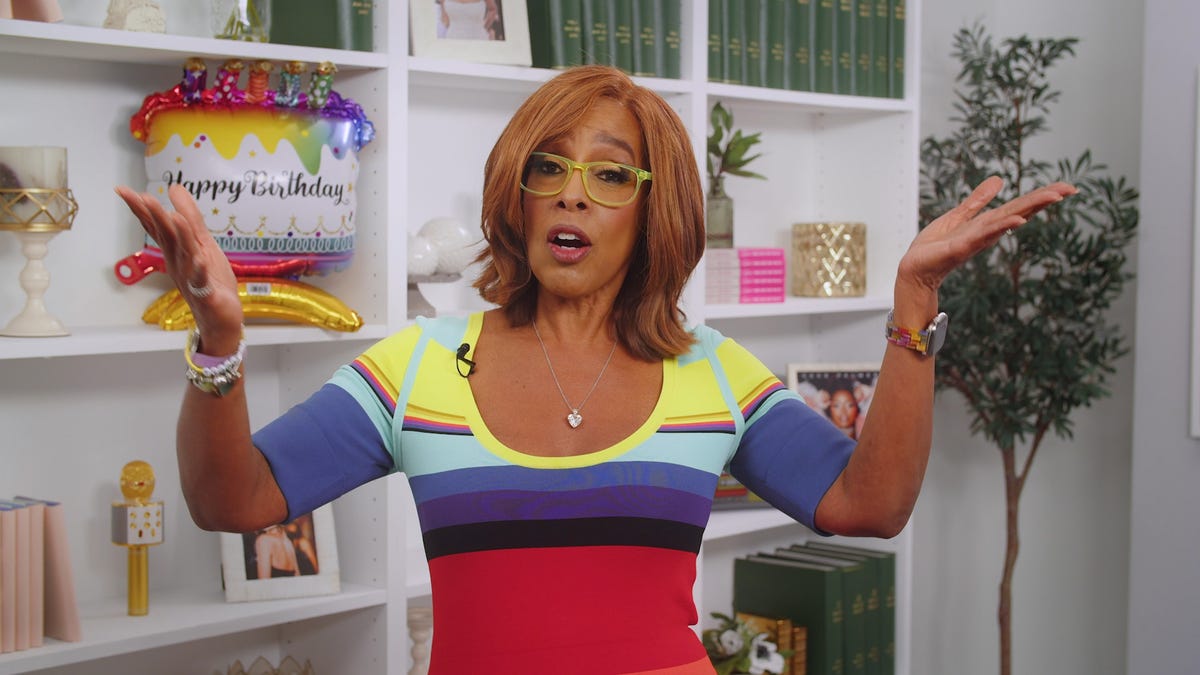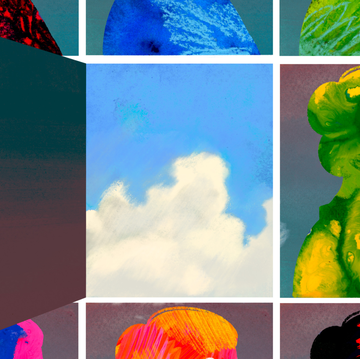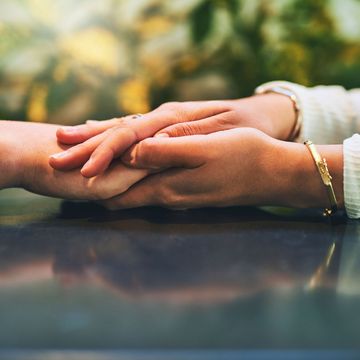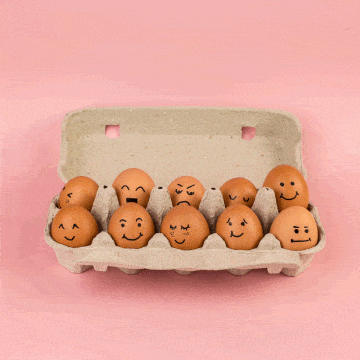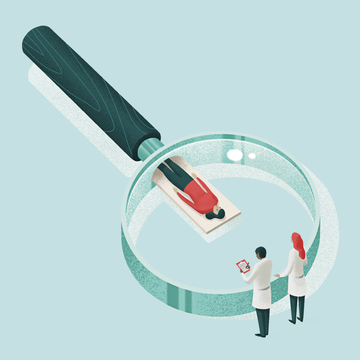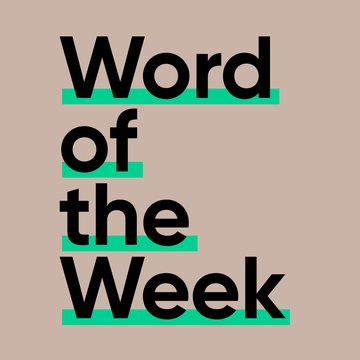While quarantining, one person had a vivid dream about an open field with exploding cows. Another imagined she had been sent to Mars—by herself—to establish the first colony on the planet alone. Meanwhile, a mom who's homeschooling during the pandemic dreamt that her child’s entire class had been assigned to shelter at her house. These are just some of the most unique nightly visions that Dr. Deirdre Barrett, a psychologist and professor at Harvard University, has documented while working on her extensive survey of dreams related to the coronavirus.
Thus far, Barrett has collected nearly 6,000 pandemic dreams—or "quarandreams," as they've become known on social media—to describe the weird and all-too memorable visions folks have reported having during their sleep since the quarantine began.
Dr. Barrett explains why we're more likely to have these vivid dreams lately, her preliminary observations from her survey, and what you can do to prevent more of these stress-related stories from disrupting a good night's sleep.
Alright, so: Why are we having more vivid dreams during the coronavirus pandemic?
"Any big life change tends to result in more and more vivid dreams," says Dr. Barrett. "The shelter-at-home situation is, of course, a big life change."
While there is no scientific consensus to why this dreaming phenomena is happening, there are several possible explanations, notes Dylan Faulkner Selterman, a social psychologist who runs the DREAM Lab at University of Maryland. "One explanation is that we have more anxiety in our dreams because we’re more anxious while we’re awake," he says. "In this case, most of us are more on-edge now because of the pandemic, so it makes sense that we’d be more anxious in our dreams, too."
Additionally, Selterman adds: "Dreams may be helping us to cope with these tumultuous times, since they can be a way for our minds to rehearse and simulate difficult situations. There is some evidence that negative emotions in dreams may help us to overcome difficult problems."
Dreams may be helping us to cope with these tumultuous times, since they can be a way for our minds to rehearse and simulate difficult situations.
According to Dr. Barrett, this collective increase in our vivid dreaming life can even affect those who are getting a full night's rest and sleeping better since the pandemic started.
"One of the biggest variables in number of dreams, vividness of dreams, length of recalled dreams, et cetera is hours of sleep," explains Barrett. "We go into REM—or the rapid eye movement sleep phase when people experience most of their dreams—every 90 minutes, but each REM period lasts longer than the one before it. So if you sleep four hours instead of eight, you aren’t getting half your sleep time, you’re getting 1/4 of it."
Dr. Barrett adds: "When you lose an hour, or an hour and half of sleep, you’re not just losing proportionally that amount of your dreams. You’re losing your biggest and most dramatic dreams." She posits that the non essential workers who are sheltering in place are likely getting more sleep at this time, hence the more memorable dreams.
What are most people dreaming about?
Barrett's survey—which asks how many dreams you've had, your proximity to experiences with COVID-19, and provides space to share the details—has resulted in some interesting preliminary observations. “I would say the most typical dream is an anxiety dream, it’s not a full on nightmare," according to Barrett. She adds, "The dreams themselves reflect more anxiety on average than you would see in a sample of dreams from normal times."
In late March, when Barrett started her survey, she noticed more frequently reported dreams of contracting the virus. Some are literal—getting a fever, or having trouble breathing, for example. But she's also seen an atypical spike in metaphorical dreams involving all sorts of bugs. "I think they’re so common now partly because of the phrase 'I’ve got a bug' when we come down with a virus," Barrett notes. "And deeper than that, lots of tiny things that cumulatively can harm or kill you is a good metaphor for the virus particles. So the frequency of bug attack dreams is very unique to this epidemic.”
Will the dreams change over the course of the pandemic?
Yes. Dr. Barrett has already seen the dream themes morphing over time, as the prolonged threat of the coronavirus pandemic continues to keep everyone cooped up inside. At first, there were many dreams about getting the virus versus dreams about stay-at-home orders. People dreaming they were out of work or school represented a small cluster. But now, the ratio is turning the other way, and Barrett says less people are focused on the virus itself, so much as the lifestyle changes.
These quarandreams about the lockdown vary depending on how folks are self-isolating. For those who are social distancing alone, Barrett reports some have "dreams they’ve been put in prison"—metaphors for isolation and loneliness. On the other end of the spectrum, those who find themselves living under one roof with many people, have dreams that exaggerate that notion of feeling crowded or overwhelmed.
Essential workers and those on the frontlines are more nightmare-prone.
Thus far, Barrett's survey has collected about 300 dreams from essential health care workers who are treating COVID-19 patients, and those responses are indicating clear patterns. "Their typical dream definitely is a nightmare, and they’re more literal than most people’s," reports Barrett. "They’re the one group that does have a clear visual image of what this is like, so they don’t have as many metaphors for the virus."
From dreams involving ventilators and even dying patients, Barrett sees these nightmares as indicative of the fact that, "most of the frontline healthcare workers are really being traumatized and feeling somewhat overwhelmed and out of control." In fact, she says, "Their dreams look just as bad as soldiers in the middle of a war, just extreme nightmares."
Although Dr. Barrett says that having vivid dreams or nightmares "is a really normal response to being in the midst of trauma," and that they should fade in a matter of weeks after the crisis subsides, she notes that if they do continue long after the situation is over, that is an indication of post traumatic stress disorder.
What do these dreams say about us?
There's no scientific consensus about dreams—the murky, ethereal nighttime reality we create in our minds can be hard to pin down. But when asked what would lead one person to have an anxious dream about getting the virus vs. another to dream that they've found the magical cure, Barrett suggests: "It represents where that person’s unconscious is at." She elaborates: “It’s just reflecting what a different part of our mind is thinking, another part of our self. Sometimes a dream can tell us that even though we feel that we adjusted and we’re not worried anymore, that our unconscious is still worrying. Or likewise, that we have reserves to deal with this virus and can be more optimistic in a way that we weren’t aware of.”
How do I prevent these stress dreams?
If you're not a fan of this period of "dream rebounds"—as Dr. Barrett likes to call them—luckily there are methods you can try to help control your dreams and avoid these anxiety-ridden nights. Barrett's advice is to think about what you actually want to dream about before you go to bed. So next time you're getting ready to snooze, try following her step-by-step routine:
- Pick out a person you'd like to see in your dream tonight, or a favorite place, or experience. Some people enjoy flying dreams, for example.
- If it's general, like a person or place, just visualize that. Or, put a photograph of what you're trying to dream about on your nightstand so it's the last thing you see before you go to sleep.
- If you have a particular favorite dream you're focusing on, replay that in detail. This makes it likelier that you'll dream about that content, and it also makes it less likely you'll have anxiety dreams.
For more stories like this, sign up for our newsletter.

